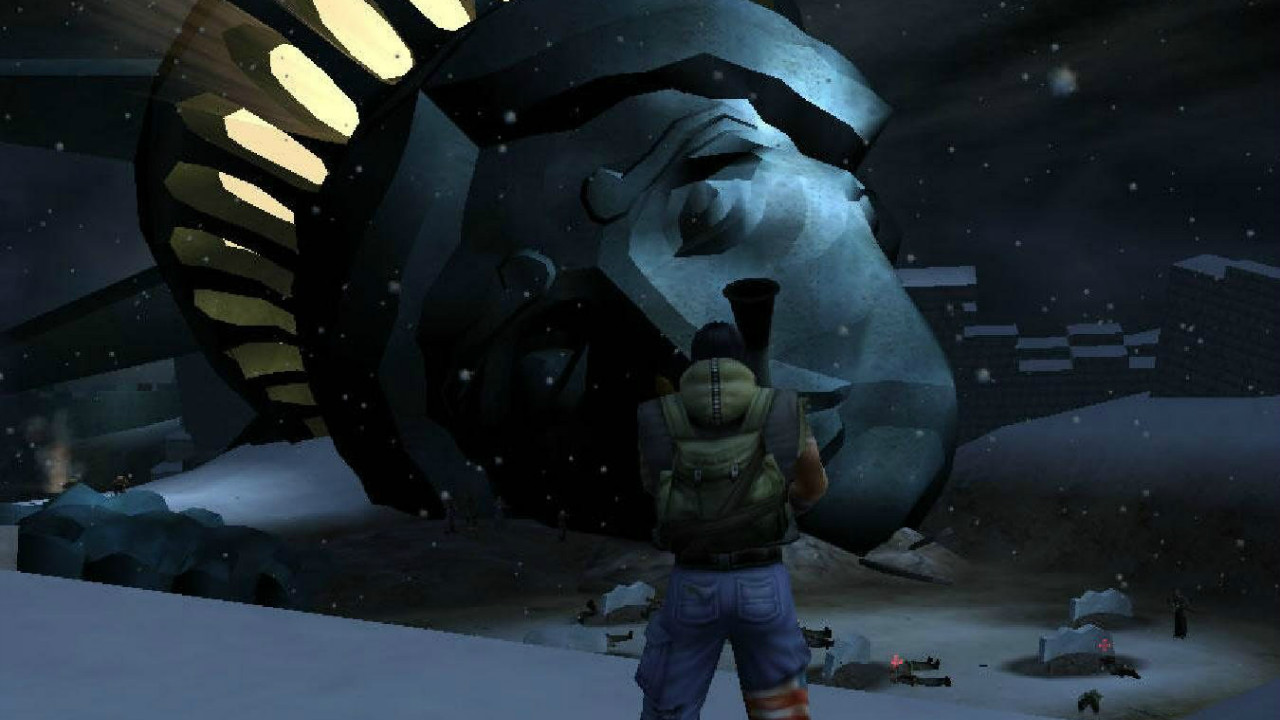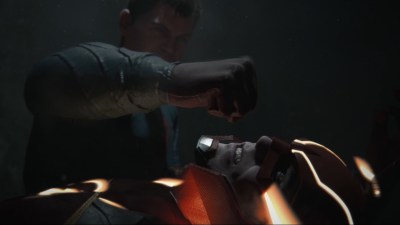We’ve talked a fair bit before about nostalgia in videogames here at Continue Play. Time marches on for all of us, and as gaming enthusiasts (some might say fanatics) get older, it’s hard sometimes not to look on the games that defined your childhood with a sort of romantic idealism. It’s also a source of cynicism. Downloading games? Ha! Now listen here, I remember a time when you had to blow on a Super Nintendo cartridge if you wanted to kick ass in Street Fighter 2 [Editor’s Note: A study has actually shown that, contrary to popular belief, blowing in a cartridge is actually more likely to cause more damage than it is to fix any problem with booting issues].
Take IO Interactive’s Freedom Fighters. Not a massive success when it was released back in 2003, but it stands out in my memories from that year. I put God knows how many hours into that game, replaying the Soviet invasion of New York City again and again.
Freedom Fighters, for those who don’t remember IO Interactive’s break between installments in the Hitman series, told the story of Chris Stone, an Average Joe plumber who lives and works in New York with his brother Troy. In Troy and Matt’s America, the Soviet Union beat the Americans to developing an Atomic bomb, which they used to put a grisly end to World War II by nuking Berlin. Ever since then, the Soviets have been gaining ground.
Of course, that’s none of Chris’ concern… or at least not until a cadre of Soviet soldiers kick in the door of the apartment he’s called to service, dragging Troy off as a provocateur. Fleeing to the sewers below, Chris falls in with the New York resistance, led by the seductive (if charismatic) Isabella, transforming him from blue-collar worker to Freedom Fighter in a New York minute.
In some respects, Freedom Fighters felt like a breath of fresh air. In the early 2000’s, the video-game industry was saturated by WWII first-person shooters, (though the success of Halo was certainly starting to upset that trend). The Second World-War was fun, but it suffered from a key flaw as a setting- we all already knew how that story ended.
Aah, but Freedom Fighters left you with the expectation that you did not know where the characters’ choices would lead. There was a hint of despair and desperation to the game. Plucky as Chris, Isabella, and the rest of the New York resistance seem to be, there was this real sense that maybe you were playing through the death throes of America. One of the things that stands out in my memories of Freedom Fighters is how true-to-life the passage of the seasons felt. It’s telling that as the game progresses, you move from a hot New York summer towards a desolate winter.
Of course, the elephant in the room for Freedom Fighters is the time in which it was developed and released - almost exactly two years from when the planes hit the towers on 9/11. It was also, coincidentally, released 6 months after the US-led coalition invaded Iraq for the second time around -though of course there was no way IO Interactive could have predicted that. Still, Freedom Fighters was not developed in a vacuum; it’s a game that remains impossible to separate from the time in which it was made, and as such, remains a powerful reflection of America at the dawn of the 21st century.
Or at least, that was how I remembered it. I dusted off my copy for the original Xbox, popped it into the disc drive (thank you backwards-compatibility emulators!), and did the time-warp back to eleven years ago.
A few levels in, and I realized what I had forgotten- Freedom Fighters is really damn hard. Okay, maybe hard is the wrong word. “Unforgiving” might be a more precise adjective. The waves upon waves of Soviet soldiers who storm the position you just left for a second to heal a wounded resistance member; the minefield of enemy snipers and machine-gun posts that have to be taken out at close range (because Chris is apparently a plumber and patriot first and a marksman second); these elements and more conspire to make you rage-quit over and over again. What’s even more disconcerting is that some of the earliest levels present the biggest challenge, since you haven’t yet garnered enough charisma (measured in a bar below your health) to order around more than a couple freedom fighters at a time.
On the other hand, the squad system is probably Freedom Fighter’s most enduring achievement. It’s a wonderfully simple system. You’re given three basic orders to issue: follow, attack, and defend. You can either give an order to all the fighters under your command, or assign a task to only one. That may not sound terribly important but if you think it through, you can actually conceivably set one or two of your fellow combatants to defend an outpost and provide you with cover, send another handful out on a direct assault, then have the rest of the group follow you on a flanking maneuver.
Really, the squad AI in Freedom Fighters still feels ahead of its time. The only game from that time that really compares would be Brothers in Arms: Road to Hill 30, but even that game will frustrate you occasionally with lost and/or stupid squadmates killing themselves. The best that can be said about squad-based combat in Freedom Fighters is that it is a lesson in what seemingly simplistic gameplay systems can do.
All that said, the controls on the Xbox version still make no sense. If you’re able to, pick up the PC version, which axes the console’s auto-aim system in favor of a regular-old reticule.
Freedom Fighters is also disappointingly a little short, though playing on the harder difficulties will certainly make it feel a bit longer.
Getting back to my point about Freedom Fighters reflecting the time in which it was made - it’s important to remember that the overriding emotion of the time was fear.
In some respects, Freedom Fighters may have been a return to what we knew. The sort of tough-guy, macho patriotism of Red Dawn, or maybe Rocky IV. After all, we’d defeated the communists and made the world safe for democracy under Reagan, hadn’t we? It’s no surprise that around the same time Freedom Fighters was released, America’s Army (the US Army’s recruitment tool/more PC take on Counter-Strike) took off in popularity.
In a sense, Freedom Fighters works because it gave us an enemy we knew, but also because it tapped into a raw nerve. It’s no coincidence that the game opens with New Yorkers fleeing through Manhattan’s streets, as a Russian Hind attack helicopter rises ominously from a cloud of dust.
The World Trade Center towers are absent from New York City’s skyline, it should be noted.
Nevermind the inherent irony in Freedom Fighters having you flee a Russian helicopter through Manhattan, in the same year as the American Air Force led a strategic bombing campaign on Baghdad.
But where we can spend all day interrogating Freedom Fighters as a work of propaganda, to do so would ignore something crucial- that at it’s core, it’s a genuinely excellent game. Freedom Fighters succeeds in what it sets out to do, depicting a resistance growing out of the sewers of New York City to take on a near-unstoppable superpower. It combines simple squad-based tactics with furious firefights to make you feel like you’re actually inspiring others to fight at your side.
Freedom Fighters holds equal importance as a piece of video-gaming history. Released in the same year as Namco’s Killswitch, whose cover system would go on to influence the development of Gears of War, Freedom Fighters can be credited with paving the way for today’s squad-and-cover-based shooters. Without Freedom Fighters to light the way, we might not have The Last of Us, or the Mass Effect series. At least not in their current forms.
In the end, Freedom Fighters is an important cultural document of the time in which it was released. While undoubtedly a product of its time, dismissing it offhand merely as a work of propaganda ignores the valuable contributions it made to the genre. Freedom Fighters was something different when it came out, and even over a decade later, it still feels a little special. If you find a copy in a bargain bin or at the back of the shelf somewhere, it’s well worth a second look.

